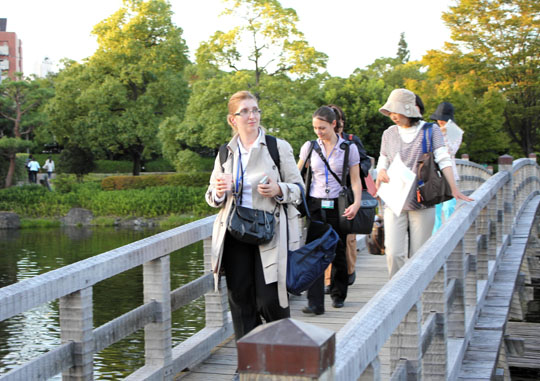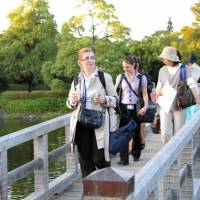Shirotori Garden in Atsuta Ward, Nagoya, is providing guided tours in Japanese, English and Chinese, as well as tea ceremonies with translation services during the ongoing COP10 biodiversity conference being held in the city through Oct. 29.
The tours offer a unique perspective on the garden, including "okamezasa" bamboo native to Japan. The name's origin, "okame," means traditional ordinary women.
The garden serves as a precious place where participants from abroad can get hands-on experience of Japanese culture and biodiversity.
"The art of the tea ceremony has coexisted with nature. I hope the guests find it as a comprehensive art including architecture, flowers and ceramic art," said Soboku Ayanokoji, 57, tea master of the Seishinkai tea society, who hosted the ceremony on the opening day.
"It's just beautiful," Barbara Nagali, 28, from Switzerland, said while observing the master's skill. "The garden is a nice place for meditation. I can feel nature here."
The city opened the garden together with the Nagoya Congress Center, the venue for COP10, 19 years ago on the site of the 1989 World Design Expo. The garden is designed under the theme of "the story of water," which depicts the Chubu region's scenery, from the headwaters of the Kiso River on Mount Ontake to the larger flow into Ise Bay.
About 230 kinds of trees, including maple and cherry, in the garden demonstrate the circle of Japan's four seasons.
Daiji Kawashima, head of Shirotori Garden, said it is a miniature of a natural landscape. "I hope the conference participants take the opportunity to look at how humans and nature can coexist," he said.
This section, appearing Saturdays, features topics and issues from the Chubu region covered by local daily Chunichi Shimbun. The original article was published Oct. 14.




